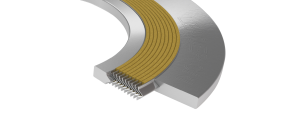Can we help you?
Ask us a question
Info@leadergt.com
Phone: 1-281-542-0600
Installation Guidelines
Choose the type of installation instructions below:
Installation Instructions for Packing Valves using CW-2000 packing
CW-2000 is an extremely simple packings to install. Installation and removal is similar to traditional bulk valve stem packing. However, following these accepted practices will insure successful operation and optimum performance. These are our suggested procedures for best results. Always consult your company standards first.
I. Removing Old Packing
A. Back seat the valve if possible. This will prevent damage to the stem area during the packing removal operation.
B. Remove the gland nuts. Clean and store in an appropriate container.
C. Raise the gland follower as far as possible away from the stuffing box. It may be necessary to tie the follower to keep it clear.
D. Remove the old packing using appropriate packing pullers.
CAUTION: Be extremely careful not to score the stem or the inside of the stuffing box with the sharp points of your instruments. Use of water jet packing remover is desirable.
E. Clean the stem and stuffing box thoroughly removing any chemical build-up.
II. Inspection
A. The valve stem and stuffing box wall should be smooth and free of pitting or scratching.
B. The valve stem and stuffing box wall should be free of excessive wear, scale and corrosion. Call your supervisor if these conditions exist.
C. The lip of the stuffing box should be smooth and square. Dress the edge if you find nicks or rough spots.
D. Allowable clearances per table on reverse side or your own company standards.
E. Clean and inspect gland, studs and nuts. Replace, if necessary.
F. On an accessible section of the valve stem, verify a smoothness of 32 RMS or less. This test is to confirm the overall condition of the valve stem.
G. If the stem is not acceptable, it must be removed and either polished or replaced.
H. The wall of the stuffing box must also be inspected for acceptable condition. A finish of between 64-125 RMS or API 600 standard is suggested.
I. Measure the clearances between the stem and the stuffing box. Allowable clearances should be per table on the reserve side or your own company standards.
III. Cutting CW-2000 Rings
A. Use the correct cross section of packing. Packing space is equal to the stuffing box diameter less the stem diameter, divided by two.
B. Never coil or spiral CW-2000 into the stuffing box. Cut individual rings of packing from the spiral. The best procedure is to cut the rings on a mandrel of the same diameter as the stem. A 45 degree skive cut is recommended.
ClipperGraph/Clipperfoil/ClipperTech rings are also easily cut on a packing cutter that produces 45 degree mitered cuts.
C. A packing set of five rings is recommended for most installations. Excess stuffing box depth can be reduced by means of a bushing. A metallic bushing of the nominal metallurgy as the valve body or stem, a carbon bushing containing corrosive inhibitor, or ClipperTech may be used.
D. The use of braided end rings is generally not necessary. For frequently stroking valves, it may be beneficial to use factory recommended end rings.
IV. Repacking
A. The ring or the stem may be lightly lubricated to ease installation.
B. Each ring should be installed snugly and then pressed firmly into the box with a tamping tool.
C. Stagger the cuts 90 degrees. Re-install gland follower and gland nuts.
D. Tighten the gland until a grip is felt on the stem.
E. An initial compression of 35% of the uncompressed stack height f the packing is recommended. (We suggest inscribing 35% on the gland follower.)
Example:
For an uncompressed packing stack height of 3.00?
35% compression = 3.00 x .35 = 1.05?
Initially, compress the packing in this example by 1.05? to a stack height of 1.95? (3.00 – 1.05).
F. We recommend stroking the valve three times after the 35% compression, and re- tightening to 35% of the original stack height as per (E) above.
G. In all cases, final compression of 35% of the original stack height is recommended. (JM Clipper can recommend specific torque values for your application; please request, if desired.)
















